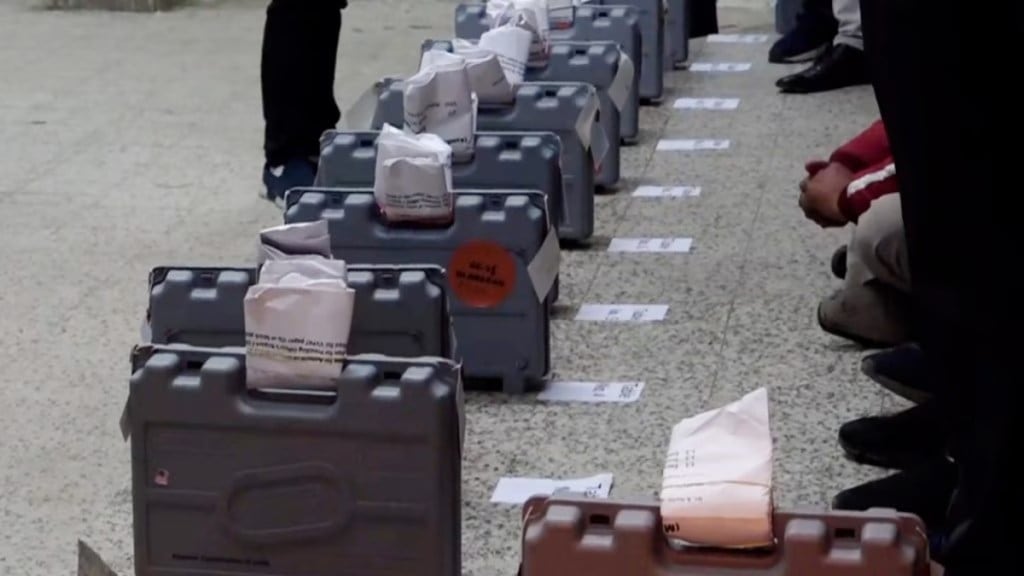The counting of votes of the 2025 Delhi Assembly election is underway for the 70 assembly seats in the nation’s capital. In an attempt to make a 27-year return in Delhi, the Bharatiya Janata Party (BJP) has increased its early advantage by 48 seats.
ECI website shows BJP is leading in 34 constituencies, with AAP at 12, while they have been declared winners in 13 and 11 seats, respectively. Here’s a look at how key caste equations in the nation’s capital may have impacted the results.
The capital is thought to be disproportionately dominated by upper castes, who make up the greatest group of voters. The majority of them are Brahmins, who are followed by Rajputs, Vaishyas, and Punjabi Khatris.
It does, according to an analysis of the castes of MLAs chosen in previous elections and the candidates running in the February 5 Assembly votes. Additionally, the presence of upper castes or dominating castes increases when parties claim to practice caste-agnostic politics.
According to sources from different political parties, Delhi is arguably the only UT in the nation where the upper castes make up the largest bloc of voters, with estimates ranging from 35% to 40%. Approximately 13% of these are Brahmins, with Rajputs (8%), Vaishyas (7%), Punjabi Khatris (5%), and other general castes making up the remaining portion.
About 30% of Delhi’s voters are members of the Other Backward Classes (OBCs), which are followed by intermediate castes like Jats. The largest group of these, comprising about half of the OBC voters, are the Jats and Gujjars, who are followed by other castes like the Yadavs. More than sixteen percent of Delhi’s population is Dalit, compared to roughly thirteen percent Muslims and three percent Sikhs.
However, the upper castes have a disproportionate amount of influence when it comes to representation. For instance, 45% of the candidates the BJP and its partners have put forth for the next elections are from higher castes. The Aam Aadmi Party (AAP) has distributed even more tickets to candidates from higher castes than the BJP, at 48%. The only party that has maintained upper caste representation in its ticket allocation commensurate to their population share is the Congress, with 35%.
Once more, Brahmins have more tickets than their share of the population among the upper castes. While the BJP and AAP have nominated 16% and 19% of its candidates as Brahmins, respectively, the Congress has allocated 17% of its tickets to Brahmins.
Vaishyas, an upper caste group, are preferred by all parties in elections. The BJP has given more Vaishyas tickets than any other party, with 17% of its candidates from the community. AAP and Congress candidates also have Vaishya representation, with only one Rajput candidate from each.
The BJP has allocated 14% of all Jats’ tickets, with Congress and AAP following at 14% and 11% respectively. Gujjars have secured 9% each of BJP, AAP, and Congress tickets.
Congress provides 30% tickets to OBCs and intermediary castes in Delhi, while AAP and BJP share 25% and 20% respectively.
Minority representation
Muslims in Delhi have consistently represented over 7% in Assembly polls, but their representation is significantly lower than the 13% of the population. The Congress has the highest number of Muslim candidates at 10%, followed by the AAP at 7%, while the BJP has not participated. Sikh representation in national elections has fluctuated from 3% in 1993 to 13% in 2013, with BJP, AAP, and Congress fielding varying percentages of Sikh candidates in polls.

